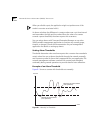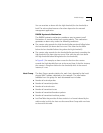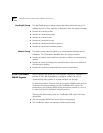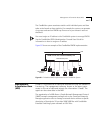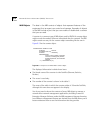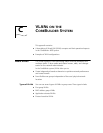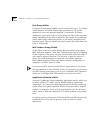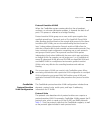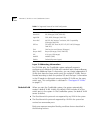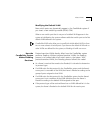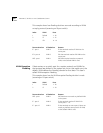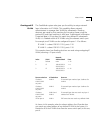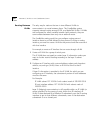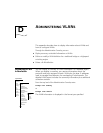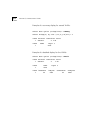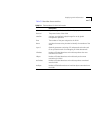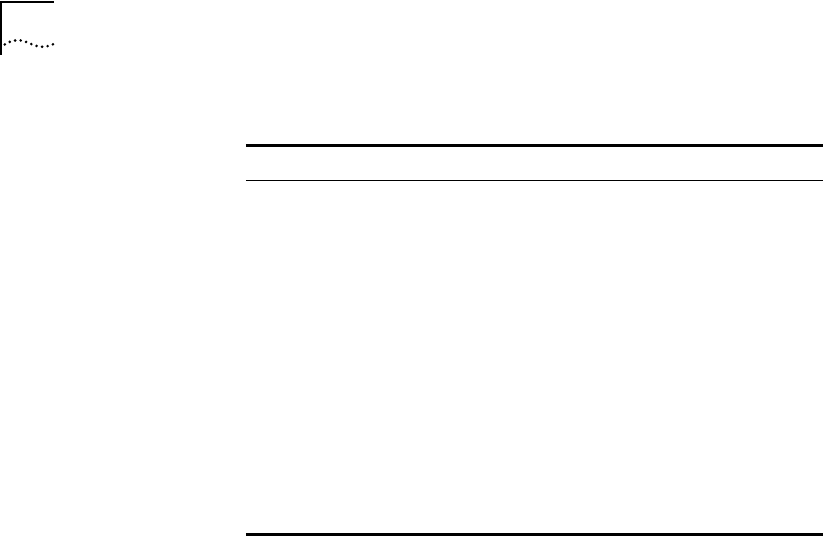
C-4 APPENDIX C: VLANS ON THE COREBUILDER SYSTEM
Layer 3 Addressing Information
For IP VLANs only, the CoreBuilder system optionally supports
configuring of individual IP VLANs with network layer subnet addresses.
With this additional layer 3 information, you can create independent IP
VLANs that share the same switch ports for multiple IP VLANs. Data is
flooded according to both the protocol (IP) and the layer 3 information
in the IP header to distinguish among multiple IP VLANs on the same
switch port. This configuration is discussed in “Overlapped IP VLANs”
on page C-7.
Default VLAN When you start the CoreBuilder system, the system automatically
creates a default VLAN. Initially, the default VLAN includes all of the
switch ports in the system. In the CoreBuilder system, the default VLAN
serves to define:
■ The flood domain for protocols not supported by any VLAN in the system
■ The flood domain for protocols supported by a VLAN in the system but
received on nonmember ports
Both cases represent exception flooding conditions that are described in
the following sections.
Table C-1 Supported Protocols for VLAN Configuration
Protocol Suite Protocol Types
IP IP, ARP, RARP (Ethertype, SNAP PID)
Novell IPX IPX (Ethertype, DSAP, SNAP PID)
AppleTalk DDP, AARP (Ethertype, SNAP PID)
Xerox XNS XNS IDP, XNS Address Translation, XNS Compatibility
(Ethertype, SNAP PID)
DECnet DEC MOP, DEC Phase IV, DEC LAT, DEC LAVC (Ethertype,
SNAP PID)
SNA SNA Services over Ethernet (Ethertype)
Banyan VINES Banyan (Ethertype, DSAP, SNAP PID)
X25 X.25 Layer 3 (Ethertype)
NetBIOS NetBIOS (DSAP)
Default Default (all protocol types)



